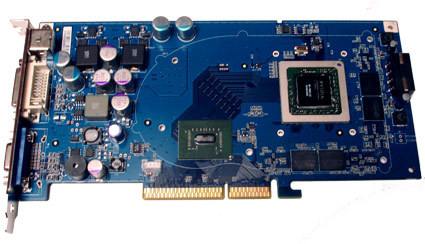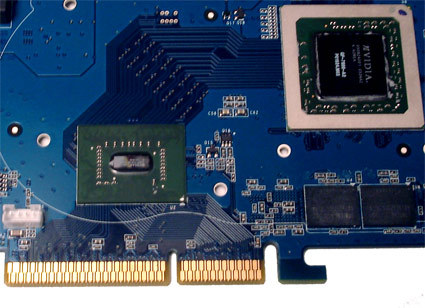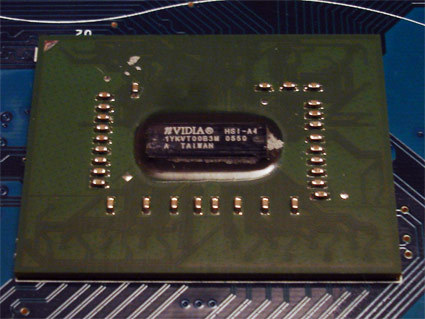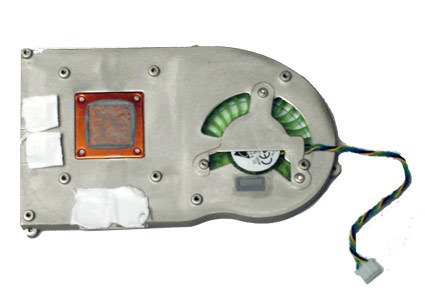The GeForce 7800GS Shows AGP Ain't Dead Yet
7800GS
The GeForce 7800GS is the AGP variant of the PCIE 7800 model. It offers a G70 core equipped with the same 302-million transistors that all of the other parts in the series have. The core has six vertex shaders, 16 pixel shaders, and eight raster operation pipelines (with their double Z pipelines for 16 operations per clock).
Why so many transistors per silicon? While those in the United States believe all were created equal, it is not true for the chips. With all of our modern processing we cannot always get the same yields out of different wafers. If you remember your probability and mechanics equations, you will not always yield the same results even with a very precise process. Even with a well-established 110-nm process there will be some chips yielding less and some yielding more clock speed. Each of these is grouped and given a price point and target market.
Does that mean that GeForce 7800GS cards have inferior GPU cores? By no means as the benchmarks will show, but they are not on the same level as the 7800 GTX. However, the bean counters will find a way to recover as much money as possible from every investment, and thankfully those that use an AGP interface will be happy to find a home for these devices.
Being built on existing G70 technology, the card is natively PCIe based. To facilitate the translation from PCIe to AGP and visa versa, NVIDIA uses a high-speed interconnect or HSI chip. NVIDIA would not comment on the actual details of this translator but stated that it was fast enough to handle any data flowing across it. We've seen this technology implemented before when NVIDIA first entered the PCIe arena. Originally, it produced chips that were natively AGP and used the HSI to convert AGP to a PCI Express interface.
One change on these cards is the placement of the voltage regulators. Traditionally, we have seen these out at the edge of the card closest to the additional power connection. NVIDIA and board partners commented that this change was to help cooling. The fan intake is further inside the case and is designed to take air coming in from the bottom of the case. The hot voltage regulators are behind the intake and do not impede the exhaust. The cooler is a single-slot solution and as loud as or louder than that of the GeForce 7800GT model cooler. During operation it rarely deviated from one speed, although it has dynamic speed controls to speed up when warm and to slow down when cooler.
The cards are expected to show up on retailer shelves such as Best Buy on Sunday for a suggested retail price of $399. E-tailers are expected to have their cards available on Monday. Talking to a few card vendors, there will be several versions available of the GS at corresponding price points. We have seen the BFG card which we used for this review, at slightly higher clock speeds and EVGA's "Superclocked" model runs at even higher clock rates. It is rumored that EVGA will come out with a KO edition of the 7800GS. If this is true we can expect even higher clock speeds and special cooling. Only time will tell what we will eventually see from all of the board vendors but for now let's look at what we have in the lab.
Get Tom's Hardware's best news and in-depth reviews, straight to your inbox.



